Last-Minute NYC Holiday Gift Guide 🎁
We’ve created a holiday gift guide with presents for the intrepid New Yorker that should arrive just in time—

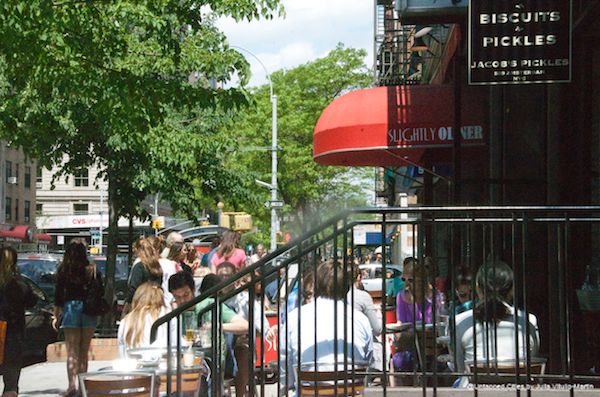
Back when New York was the Naked City with 8 million stories, the Upper West Side was a food desert. Sure, giants walked the earth—Isaac Bashevis Singer, Duke Ellington, Hannah Arendt, and many more—but they mostly ate in dingy diners (exception: Barney Greengrass) or, if they wanted a decent meal, sprang for an expensive cab ride to a better neighborhood.
Today, New York has some 8.25 million people and the Upper West has renowned restaurants of just about every type and for every income level. The industry has become so successful that it is able to support a remarkable food festival—New Taste of the Upper West Side—sponsored by the Columbus Avenue BID.
Over 80 top UWS chefs prepare their favorite dishes in a sort of elegant meet-up with the neighbors, who can choose among three evenings: the Soirée in the Park for $150, starting at 7:00 p.m., May 29; Comfort Classics (2 tickets for $185) 7:00-10:00 p.m., May 30; and Best of the West for $135, 7:00-9:30 p.m., June 1. “Taste is truly of the neighborhood, and for the neighborhood. It’s in every way a really nice thing,” says Shake Shack CEO Randy Garutti.

Such an event would have been unthinkable as recently as the 1990s, when the neighborhood still retained some of the characteristics that provoked Jane Jacobs to designate it one of her “areas of city failure,” dismissing it as a “surly kind of slum.”
For one thing, its wide streets and long blocks (which Jacobs disliked) were dirty and dangerous. Columbus BID executive director Barbara Adler, who grew up on the Upper West, recalls, “In those days we didn’t have any cafés at all, it was super dark at night, and you ran wherever you were going. You never went on the side streets. You’d just head to 86th to make your way across as fast as you could go.” New York City’s successful war against crime changed all that. Major crime citywide has been reduced 78.9 percent since 1993, with an even higher reduction of 80.9 percent in the 24th precinct (86th Street up to 110th), and 83.9 in the 20th (below 86th down to 59th, and named New York’s safest precinct last year). UWS streets—including the once dreaded side streets—are now so safe that life and activities of all kind thrive.
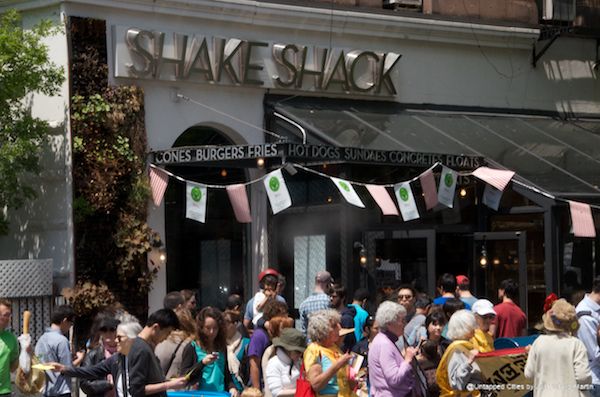
In many ways, Shake Shack, which calls itself a roadside burger stand, symbolizes the changes. Located on the corner of 77th Street and Columbus—previously an unsuccessful food site for as long as anyone can remember—Shake Shack has transformed the block with its legendary, eclectic lines of people waiting to get in—youngsters, oldsters, tourists, natives, babies, dogs, you name it. “Our patrons reflect the West Side’s great mix of incomes and ages,” says Garutti. “The Shack is above all a community gathering place, where people come from all walks of life.”
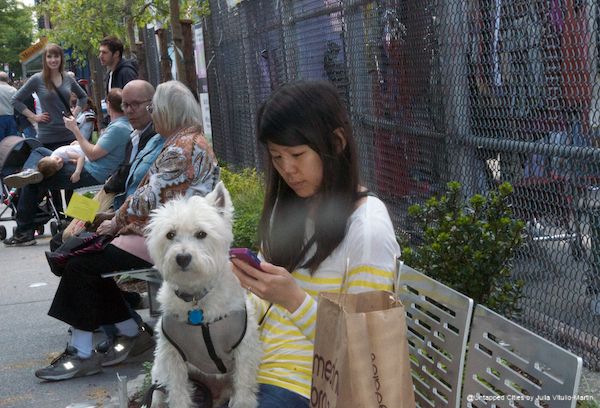
Still, since its opening in 2008, the Shack has stood opposite one of the Upper West’s least lovely blocks—Columbus between 76th and 77th—which is marred by PS 87’s forbidding chainlink fence. It’s an important block culturally—caddy corner to the Museum of Natural History—and commercially. Even though it is the only block in the entire BID with no commercial development, it is across from Isabella’s, one of the Upper West’s earliest restaurant successes, plus three stores—Babette, Eileen Fisher, and Design Within Reach. And Shake Shack’s immediate neighbor to the west is the Michelin-starred Dovetail. They all face the grim chainlink fence, which Adler calls the “ugliest thing on Columbus Avenue.”
The fence still stands but will be gradually camouflaged by nine new trees planted by the BID as part of its streetscape redesign, as well as six handsome aluminum benches designed by the Department of Transportation. The BID is also installing in-ground solar lighting, a solar-operated trash compactor, and Manhattan’s first bioswale, which is a type of biofilter that looks like a landscape element but is meant to remove silt and pollution from surface runoff water. The project, notes Adler, “was built 100 percent with money saved from our New Taste events over the past five years.”
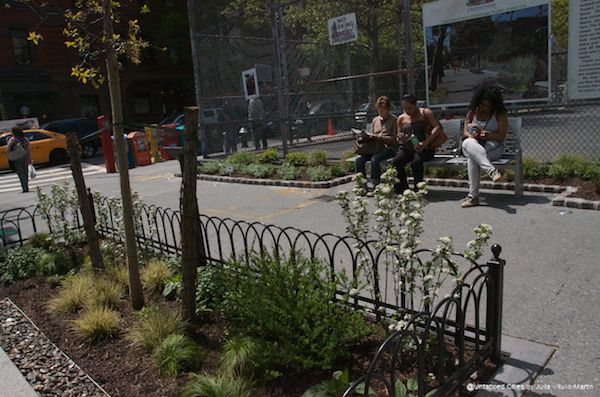
The Upper West’s southern boundary is 59th Street, where the forlorn Coliseum, built by Robert Moses’s Triborough Bridge & Tunnel Authority, stood until 2000. Was the demolition of any building in New York ever less mourned? Described by critic Paul Goldberger as “a gray brick box,” it deadened its neighborhood, seemingly for blocks. Its replacement by the Time-Warner Center may be the most significant single transformation on the UWS. “Time-Warner was the catalyst for the re-energizing of the neighborhood,” says Chef Marc Murphy of the celebrated bistro, Landmarc. “The developer, Related, did an amazing job. Landmarc would not be here except for them.”
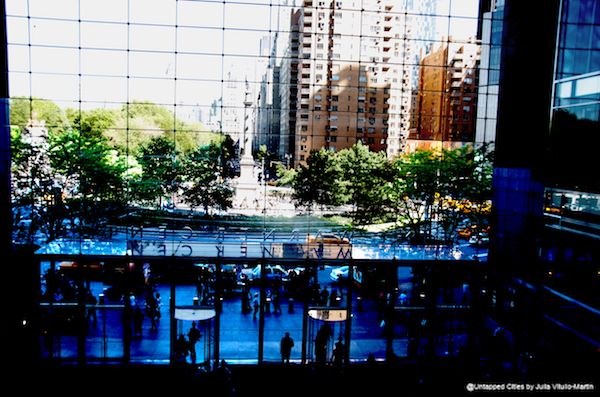
But how does an elite restaurant like Landmarc survive on the 3rd floor? “Our business goes all day,” says Murphy. “CNN, for example, comes in early for breakfast. Then we get mothers for a late breakfast, a good lunch crowd from Midtown, maybe kids with parents for early dinner. We also have people stumbling in at 1:00 in the morning after a long opera.” His other UWS restaurant, Ditch Plains on 83rd Street, right off Columbus, is a whole different thing. It offers fun bargains like Surfer Sundays ($30 lobster plus fixings and $4 draft beers) and Low-Tide Oysters on Tuesdays and Wednesdays. “It’s a restaurant for everybody,” he says. “Very family-friendly. It all works out. With kids, especially smaller kids, you have about a 45-minute span when they can be there. Parents come early, eat, then you have another seating.”
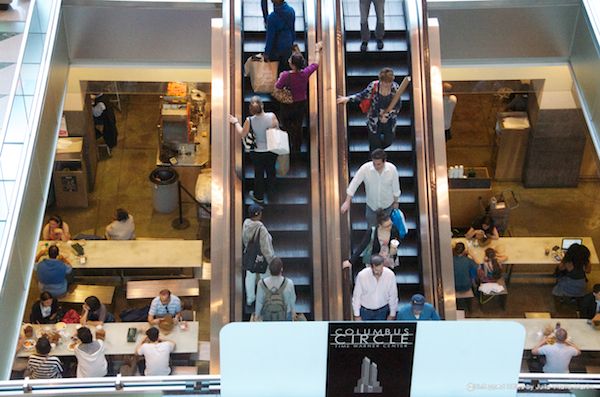
Like Garutti and Murphy, restaurateur Maria Loi lives in the neighborhood—indeed, on the very same block as her eponymous restaurant, Loi, which serves elegant Greek food. “This is my real home,” says Loi, gesturing at her stylish main dining room. “I’m always here. I wrote my book here. West 70th is my street (I live a block away), and I don’t intend to ever leave. It reminds me of my village in Greece, Nafpaktos, across from the Peloponnese. I love the neighborhood, and I think the neighborhood loves me.”
Which is perhaps what the West Side was looking for through all those difficult decades—a little love. In some ways the New Taste of the Upper West Side is as much a love festival as a food festival. As Marc Murphy says, “New Taste is an opportunity for us to thank our customers, but I can’t tell you the number of thank yous I get back for opening on the West Side.” Chef Stan Matusevich, who 2 1/2 years ago moved down a few doors down on West 79th Street to the Sunburnt Calf from Fishtag, is planning to debut a new name (Burke & Wills) and a new upscale format for his Australian restaurant at New Taste. “Taste will be our coming out,” he says. “It’s the neighborhood showcase. No restaurant can survive up here as a destination only. You need a good, regular, loyal clientele from the neighborhood—and that’s the clientele you’ll meet at Taste.”
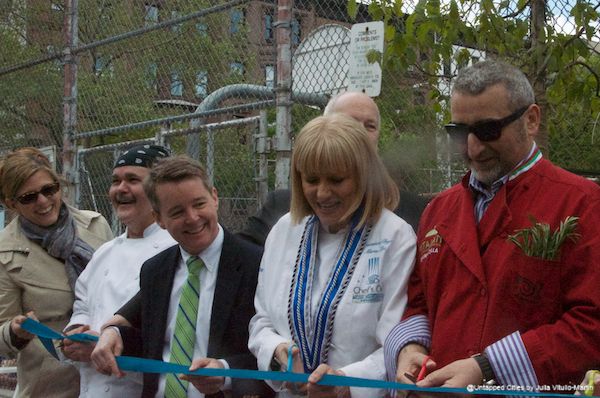
Julia Vitullo-Martin is a Senior Fellow at the Regional Plan Association and director of its Center for Urban Innovation.
Subscribe to our newsletter